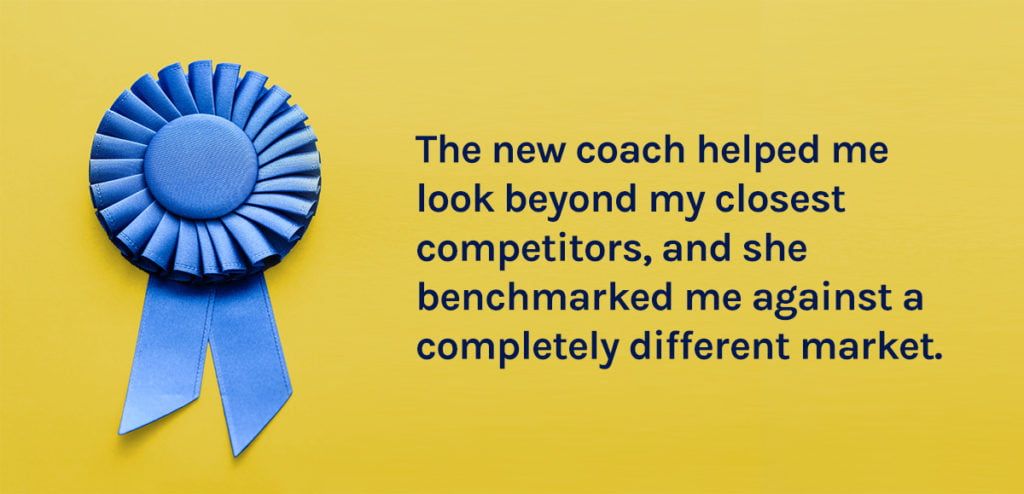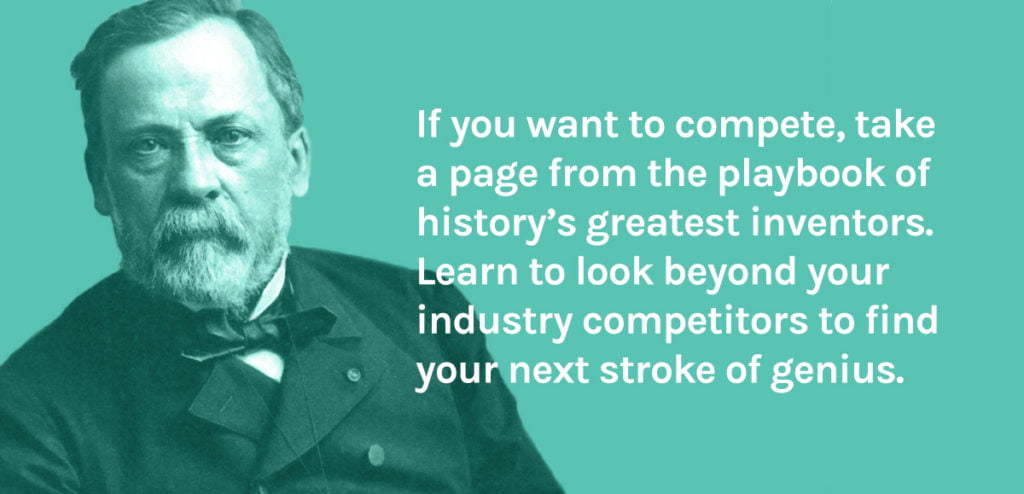I can't count the number of hours I've spent clustered around an art director's desk, surrounded by my agency teammates, tearing into the new creative released by my client's number one competitor. It's easy to fixate on a close competitor because gaining a few percentage points in market share, getting more retweets on a social campaign, or winning more awards at a marketing competition all provide a big boost to the marketing or agency teams' egos.
Competitor monitoring doesn't just happen in the marketing department either. It can drive the procurement team to adopt a new piece of tech first, or it can spur development to rush a new product to market first. It's tempting to try and beat your competitor with these small jabs, but if you only try to climb one rung higher on the ladder, you'll often miss the chance to summit a mountain.
Innovation can be negatively affected when you benchmark against your closest competitor. Often, you need to look beyond your competitors if you want to compete more effectively.
I have been a horseback rider for many years, and following college, I began to compete in jumping. The type of jumping I did was called "show hunters." It's a modern-day adaptation of fox-hunting.
To learn how to compete in this sport, I worked with local coaches. They would take me through different exercises designed to improve my skills as a rider and bring out the desirable qualities of my horse. During horse show season, we would attend competitions in my hometown of Winnipeg, Manitoba. I'd ride in my classes and get feedback from my coach, and then we would stand outside the jumping ring and watch other riders compete.
There were a handful of riders who always earned the top placings in the class. I'd study their rides and use them to evaluate my own performance. Year after year, I could not beat them. I was convinced it was because their horses had better jumping style than mine did.
Then one year, I had the opportunity to work with a coach who had trained and ridden jumping horses in Florida – a mecca for equestrian sport. Florida was her benchmark, and it was lightyears ahead of mine.
The new coach gave me exercises designed not to help me stay competitive in Winnipeg, but to not embarrass myself according to her Florida-level standards. She broke down every component of my ride, took me back to the basics, and drilled me on perfecting every step of the jumping course – regardless of whether my local competitors were focusing on the same details. When I entered the show ring again, I had completely different results. My horse still had his shortcomings, but we had improved every other quality on which we could be judged. Not only did I improve my placings, but I won more prize money that year than I ever had previously (which was, like, $600 – but it felt like a lot more).
What changed? I was riding the same horse in the same city and competing against the same riders.





